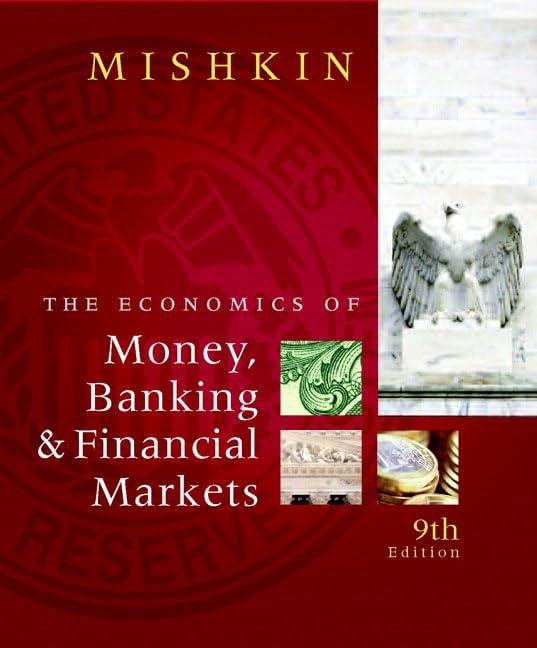Question
3) Suppose that the spot exchange rate S(/) between the yen and the euro is currently 110/, the 1-year euro interest rate is 6% p.a.,
3) Suppose that the spot exchange rate S(/) between the yen and the euro is currently 110/, the 1-year euro interest rate is 6% p.a., and the 1-year yen interest rate is 3% p.a. Which of the following statements is MOST likely to be true? A. The high interest rate currency must sell at a forward premium when priced in the low interest rate currency to prevent covered interest arbitrage Page 3 of 13 B. Real interest parity does not hold C. Uncovered interest parity requires equality of the return to investing in yen for 1-year versus converting the yen principal into euros, investing the euros for 1-year, and then selling the euro principal plus interest at the forward rate for yen D. Covered interest parity between a 1-year yen-denominated asset and a eurodenominated asset of matching maturity holds if the forward exchange rate F(/) < S(/) E. The expected future spot rate, SE(/), should be higher than the current spot rate to ensure uncovered interest parity 4) Suppose that there are deviations from the covered interest parity. Arbitrage profits can be earned by borrowing JPY, exchanging JPY to USD at the spot exchange rate, investing the US dollars, and exchanging the USD investment to JPY at the forward rate to repay the JPY debt in 1 year. Which of the following adjustments is MOST likely to restore the covered interest parity? A. An increase in US interest rate B. A decrease in JPY interest rate C. An increase in spot exchange rate, S(USD/JPY) D. An increase in 1-year forward rate, F(USD/JPY) E. An increase in expected future spot rate, SE(USD/JPY) 5) Suppose that the Japanese Yen (JPY) is pegged to the Australian dollar (AUD). You think that there is a 25% probability that the JPY will appreciate relative to AUD by 1% over the course of the next month, and there is a 75% probability that the JPY will remain pegged to the Australian dollar. What interest differential per annum would prevent you from speculating by borrowing JPY and lending AUD? A. Australian interest rate minus Japanese interest rate is greater than 3% per year B. Australian interest rate minus Japanese interest rate is less than 3% per year C. Australian interest rate minus Japanese interest rate is greater than 3.6% per year D. Australian interest rate minus Japanese interest rate is less than 3.6% per year E. None of the above can prevent the speculation by borrowing JPY and leading AUD
Step by Step Solution
There are 3 Steps involved in it
Step: 1

Get Instant Access to Expert-Tailored Solutions
See step-by-step solutions with expert insights and AI powered tools for academic success
Step: 2

Step: 3

Ace Your Homework with AI
Get the answers you need in no time with our AI-driven, step-by-step assistance
Get Started


